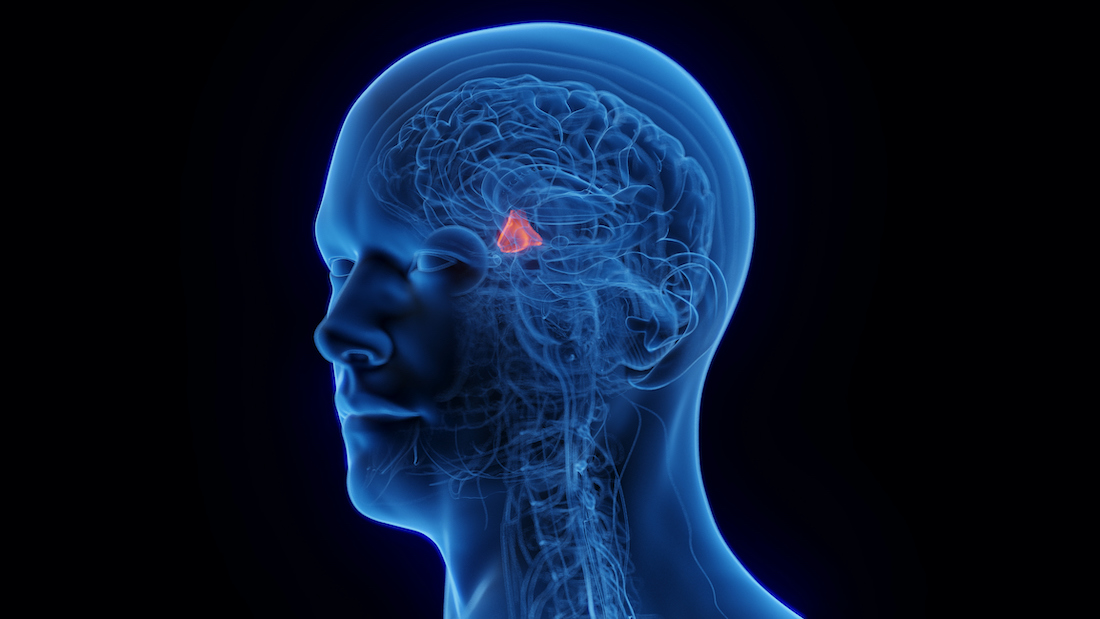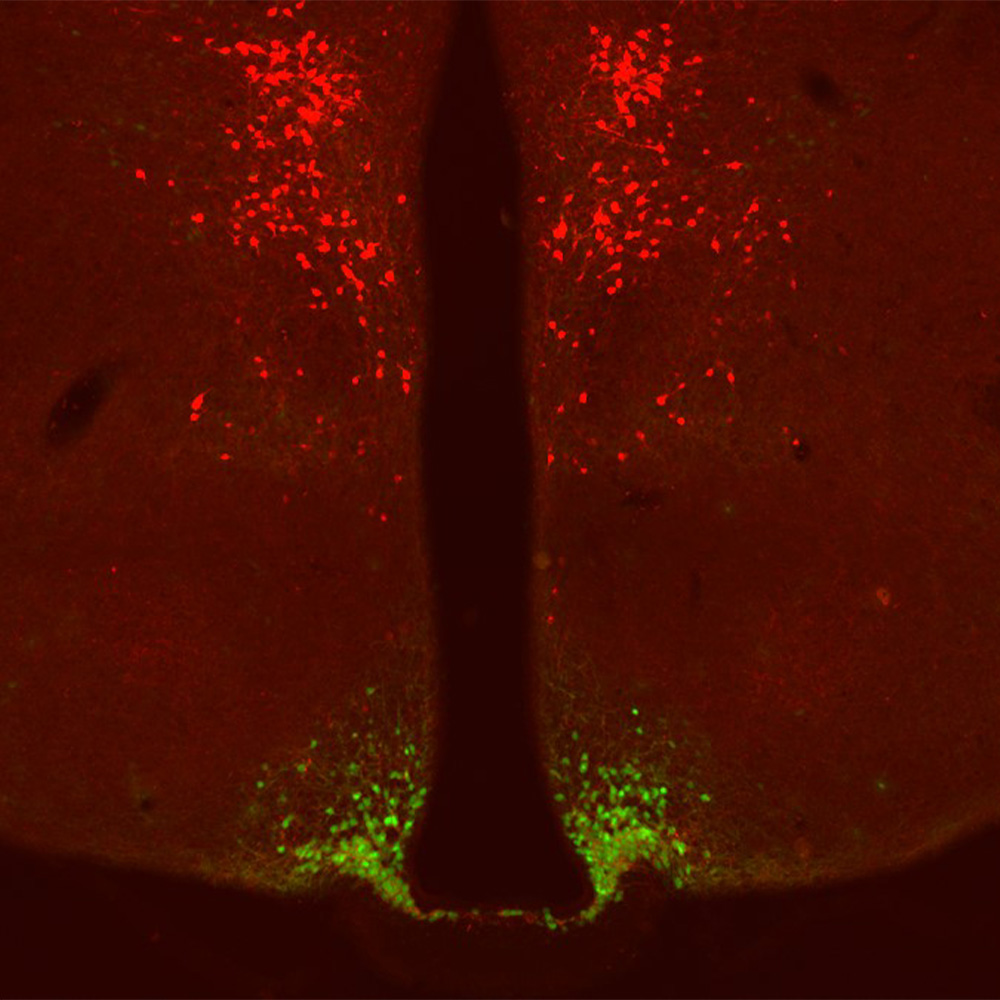Study identifies weight-loss drug target in the brain
Findings could lead to more effective medications in same class as semaglutide and tirzepatide, UTSW researchers say

DALLAS – Aug. 08, 2024 – A team led by researchers from UT Southwestern Medical Center and a university in South Korea has identified a subset of brain cells whose activation may be partially responsible for the effects of a popular class of weight loss drugs that includes semaglutide and tirzepatide. Their findings, published in Science, could eventually help scientists optimize the efficacy of these drugs, known as glucagon-like peptide-1 receptor agonists (GLP-1RAs).

“GLP-1RAs reduce food intake and body weight by acting primarily in the brain, but there’s a debate about where in the brain these drugs work. Our study shows that neurons in the dorsomedial hypothalamus are important for the drugs’ appetite-reducing effects,” said Kevin Williams, Ph.D., Associate Professor of Internal Medicine and a member of the Center for Hypothalamic Research at UT Southwestern. Dr. Williams is also an Investigator with the Peter O’Donnell Jr. Brain Institute.
He co-led the study with Hyung Jin Choi of Seoul National University College of Medicine as well as co-first authors Eunsang Hwang, Ph.D., postdoctoral researcher at UT Southwestern, and Kyu Sik Kim and Joon Seok Park of Seoul National University College of Medicine.
The Williams Lab has long been interested in neurons in the hypothalamus that play an important role in mediating hunger, which in turn affects body weight. When these neurons become activated, they stimulate appetite, and when their function is inhibited, they suppress it.

Semaglutide (marketed under brand name Wegovy) and other GLP-1RAs take advantage of this phenomenon by indirectly inhibiting these neurons. In this new study, a series of experiments identified the drug’s actual target in a different part of the brain called the dorsomedial hypothalamus. Experiments suggest that GLP-1RAs act on two different populations of neurons: one that turns on at food exposure and another that turns on when eating begins, dual functions probably meant to jointly prevent food overconsumption, Dr. Williams explained.
Together, he said, the findings suggest that these neurons are a significant target for GLP-1RAs. However, he said, they are probably not the only target. Future research is necessary to identify these areas and their potential role in the effects of GLP-1RAs.
The more researchers know about how these drugs work, the more they’ll be able to improve their effects and repurpose them for other uses, Dr. Williams said. For example, in another recent study published in Nature, he and colleagues from other institutions combined a GLP-1RA with another drug that blocks the N-methyl-D-aspartate (NMDA) receptor, a protein involved in communication between brain cells. NMDA blockers have been shown to induce weight loss in preclinical models, but when delivered systemically, these drugs have significant side effects, such as an increase in body temperature and hyperactivity.
Linking the two drugs had a synergistic effect in obese mice, prompting significantly more weight loss than either drug delivered alone and reducing insulin, cholesterol, and triglyceride concentrations in plasma. This approach could eventually treat metabolic disease in humans, Dr. Williams said.
Other UTSW researchers who contributed to the study are Assistant Professor of Internal Medicine Laurent Gautron, Ph.D., and Research Technicians Bryan Portillo, B.S., Kyle Grose, B.S., and Jason Ajwani, B.S.
This study was supported by grants from the Korea Health Industry Development Institute funded by the Ministry of Health & Welfare (HI22C1060), the Korean Diabetes Research Association, the Korean Diabetes Research Foundation (800-20220575), the National Research Foundation of Korea (NRF-2018R1A5A2025964, 2021R1A6A3A14044733), the National Institutes of Health National Institute of Diabetes and Digestive and Kidney Diseases (R01 DK119169, R01 DK119130-5830), and National Institute of General Medical Sciences (R35 GM140854).
Dr. Williams is a shareholder of Novo Nordisk and Eli Lilly, pharmaceutical companies that manufacture weight loss drugs.
About UT Southwestern Medical Center
UT Southwestern, one of the nation’s premier academic medical centers, integrates pioneering biomedical research with exceptional clinical care and education. The institution’s faculty members have received six Nobel Prizes and include 25 members of the National Academy of Sciences, 21 members of the National Academy of Medicine, and 14 Howard Hughes Medical Institute Investigators. The full-time faculty of more than 3,200 is responsible for groundbreaking medical advances and is committed to translating science-driven research quickly to new clinical treatments. UT Southwestern physicians provide care in more than 80 specialties to more than 120,000 hospitalized patients, more than 360,000 emergency room cases, and oversee nearly 5 million outpatient visits a year.
